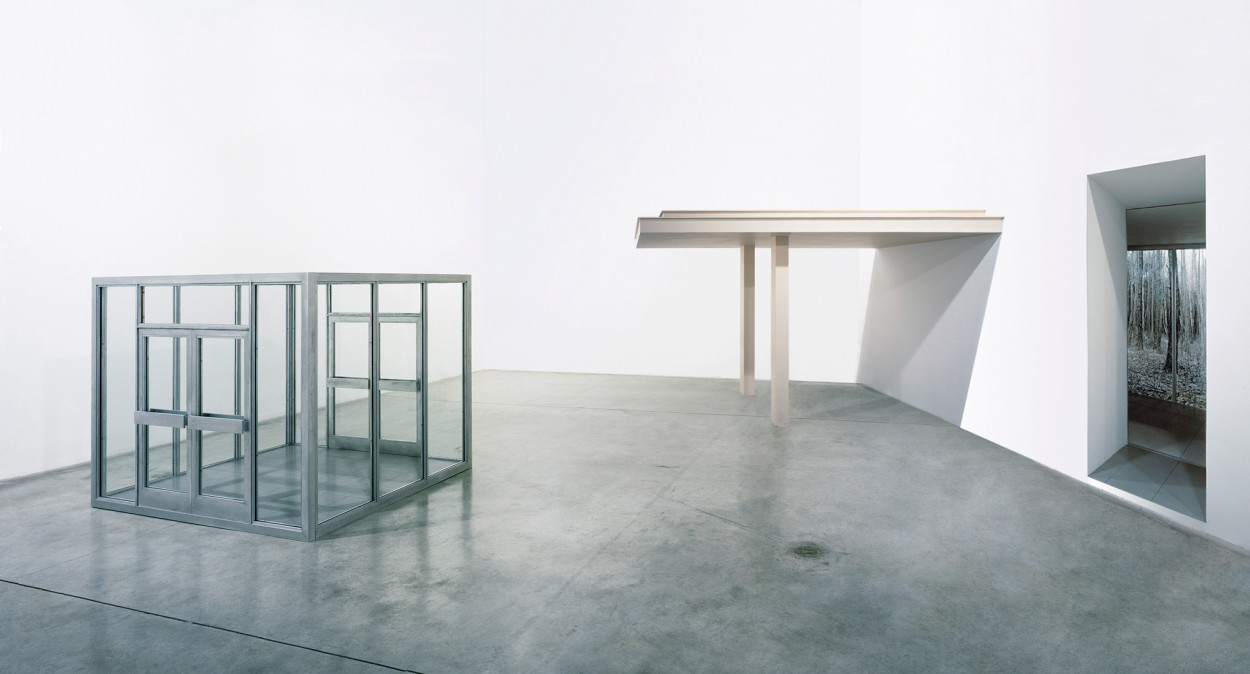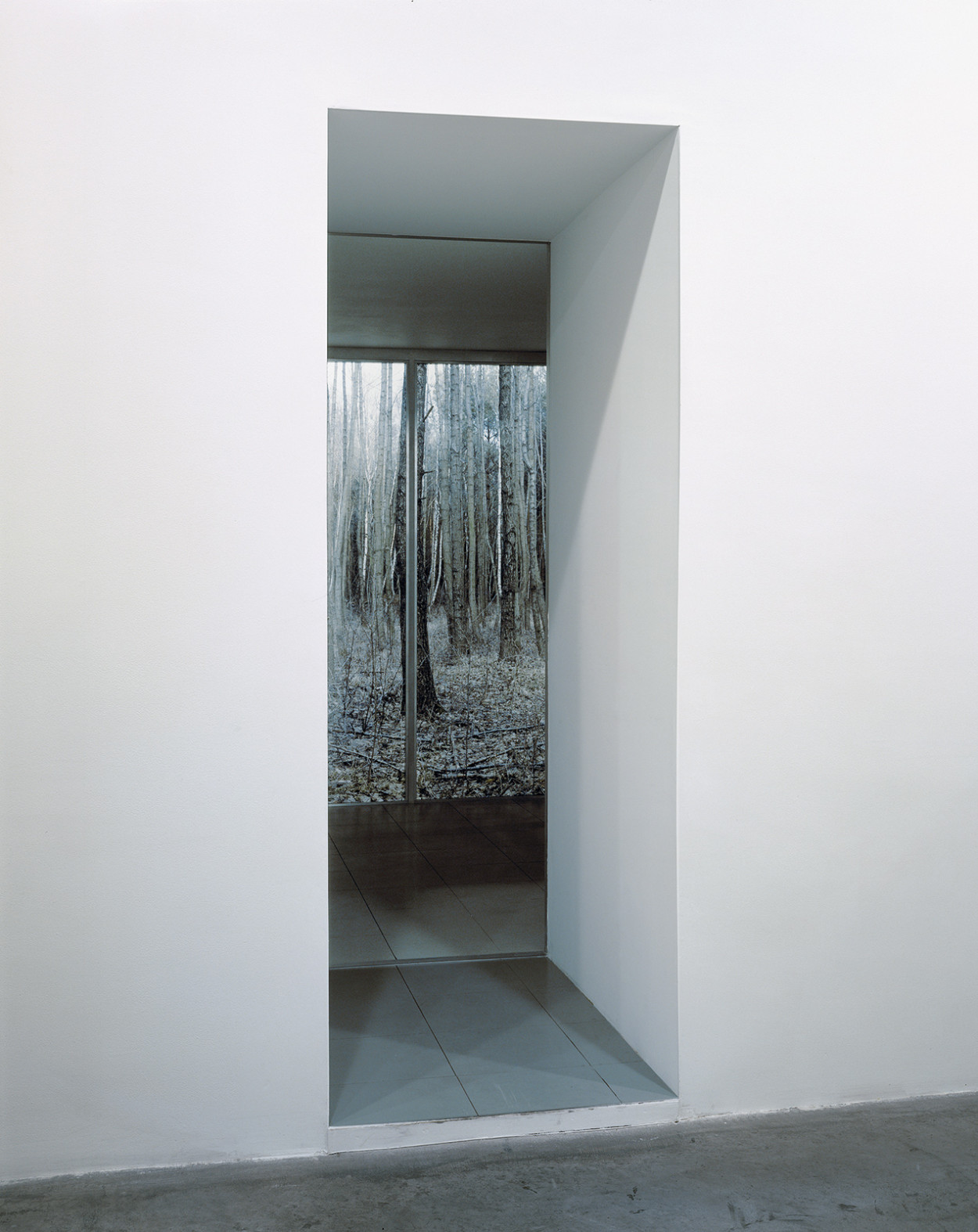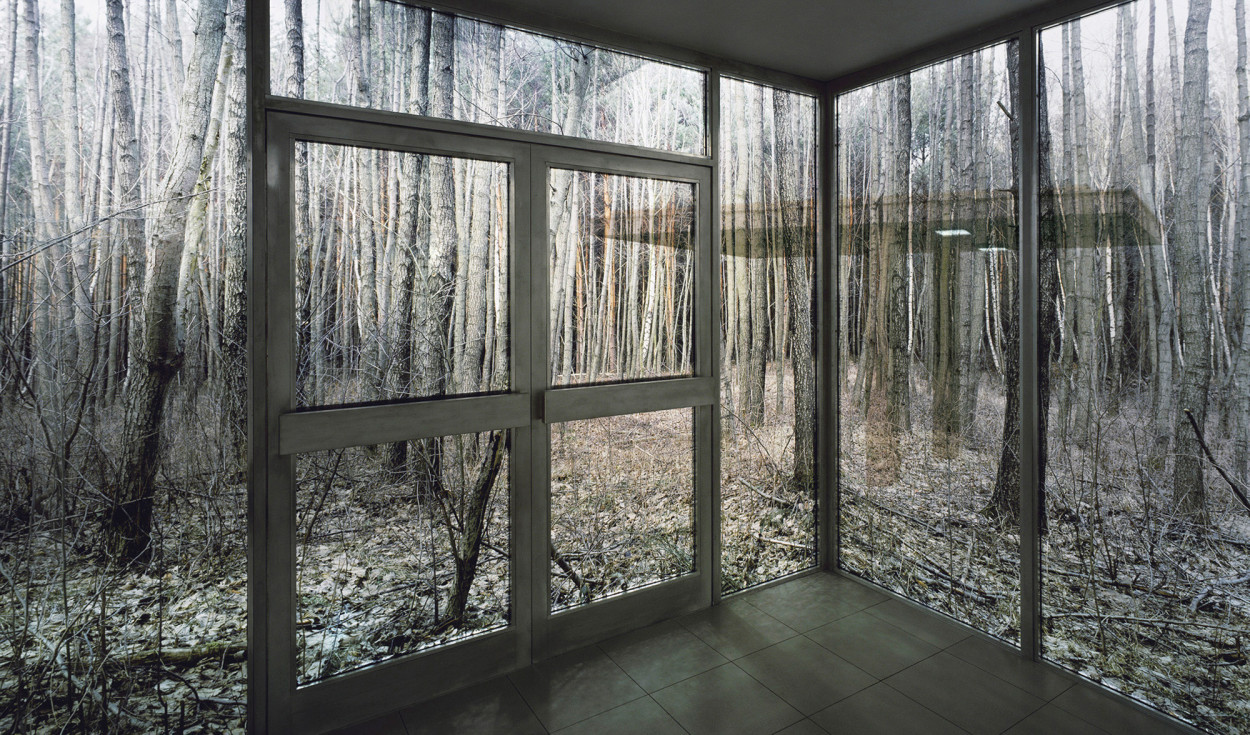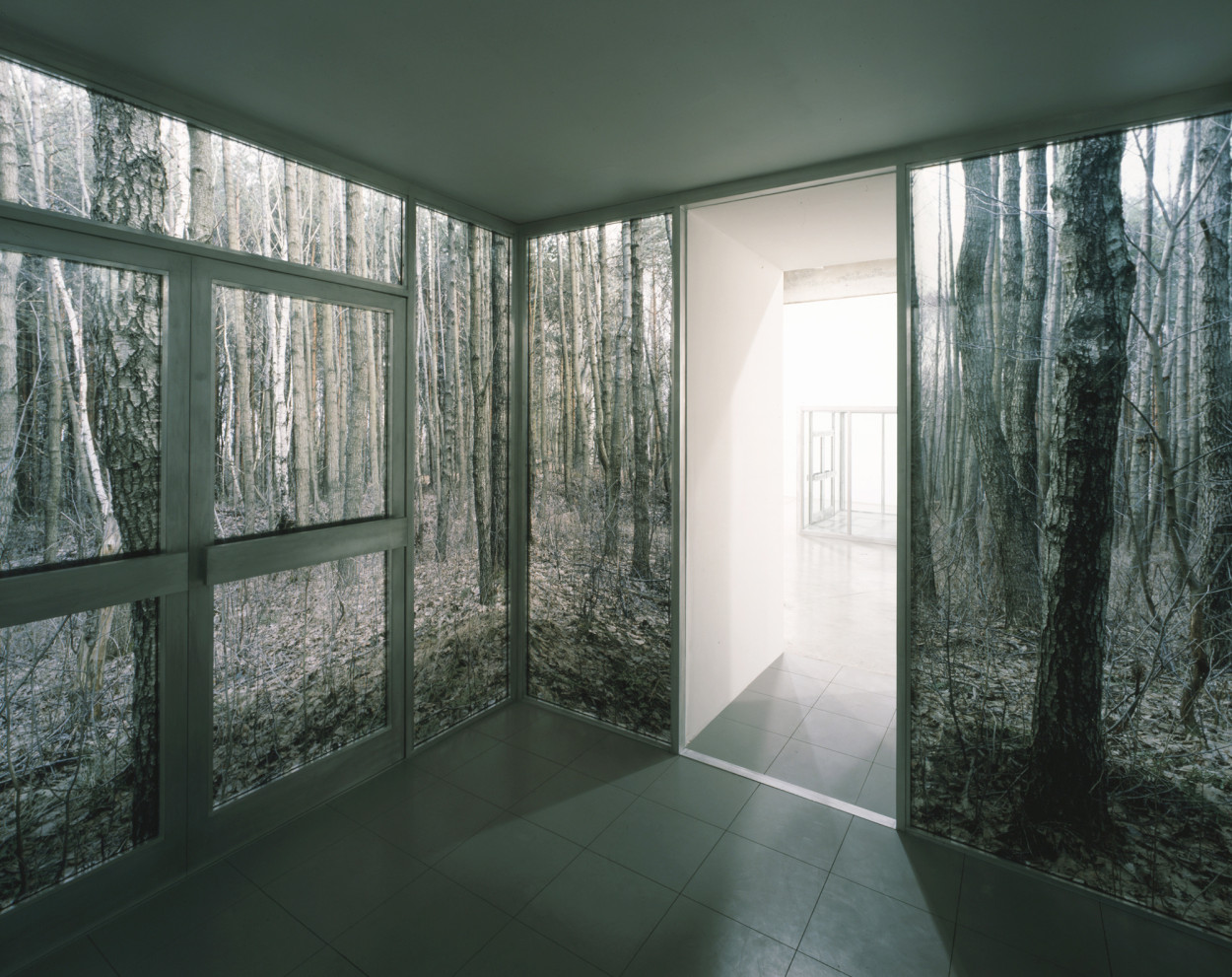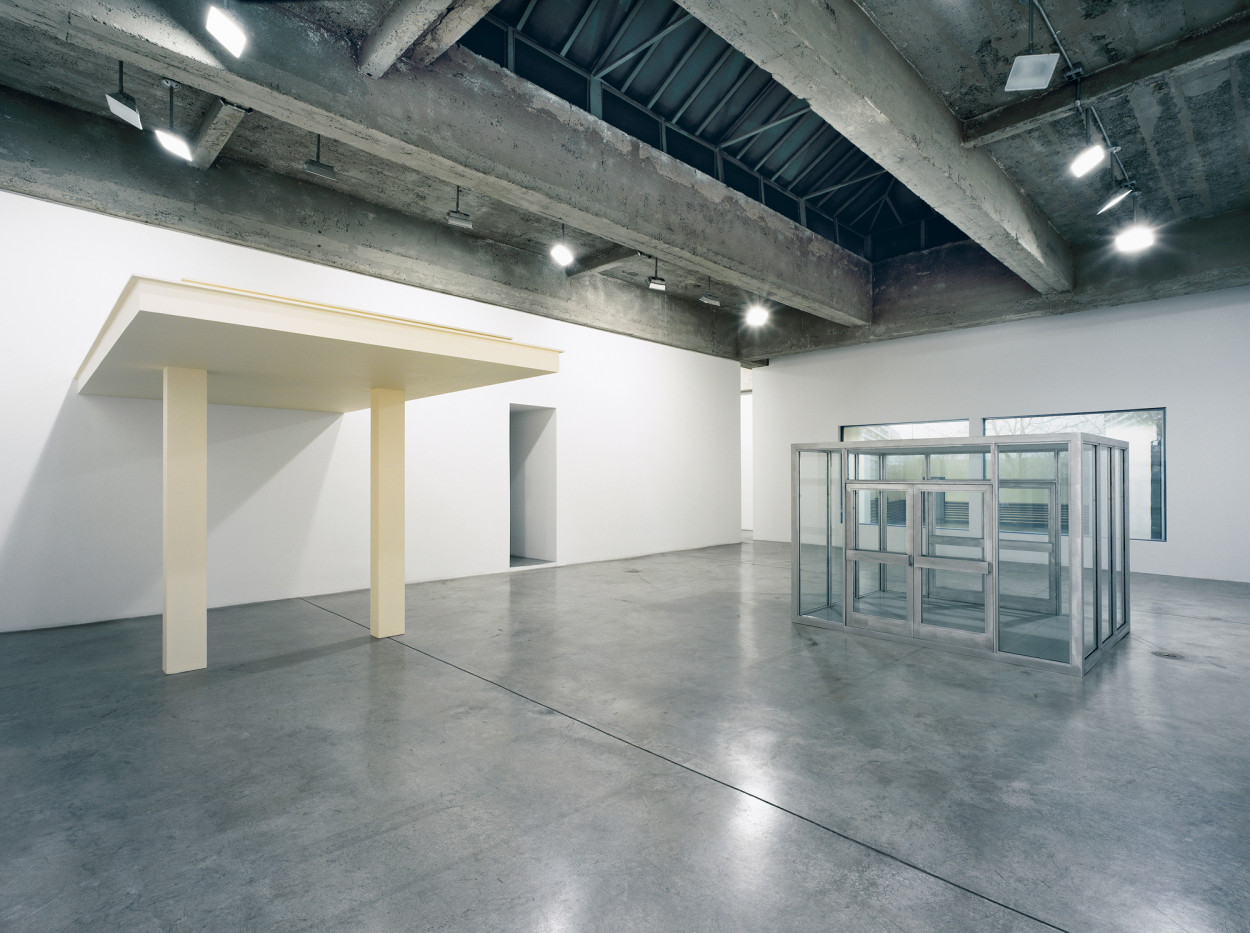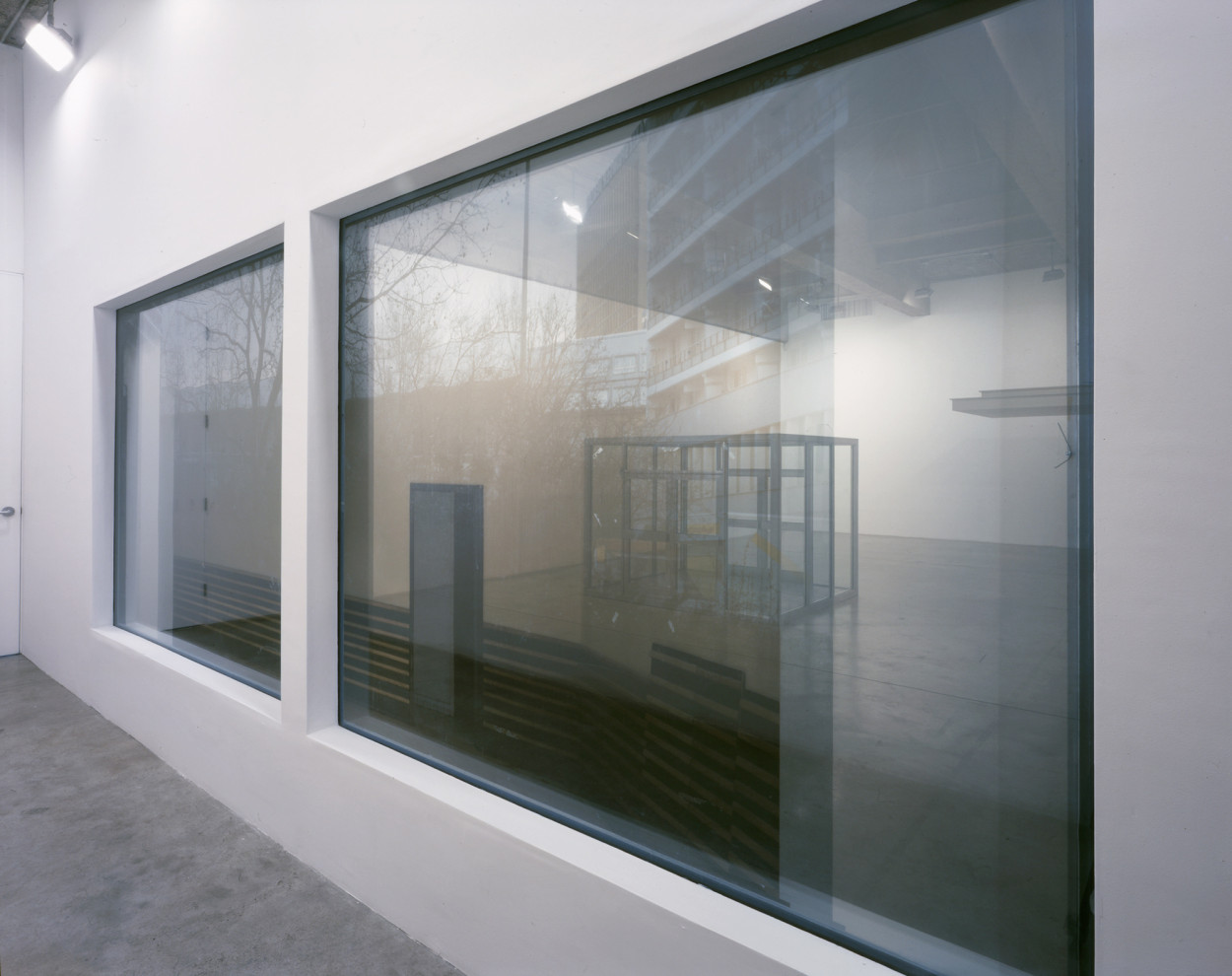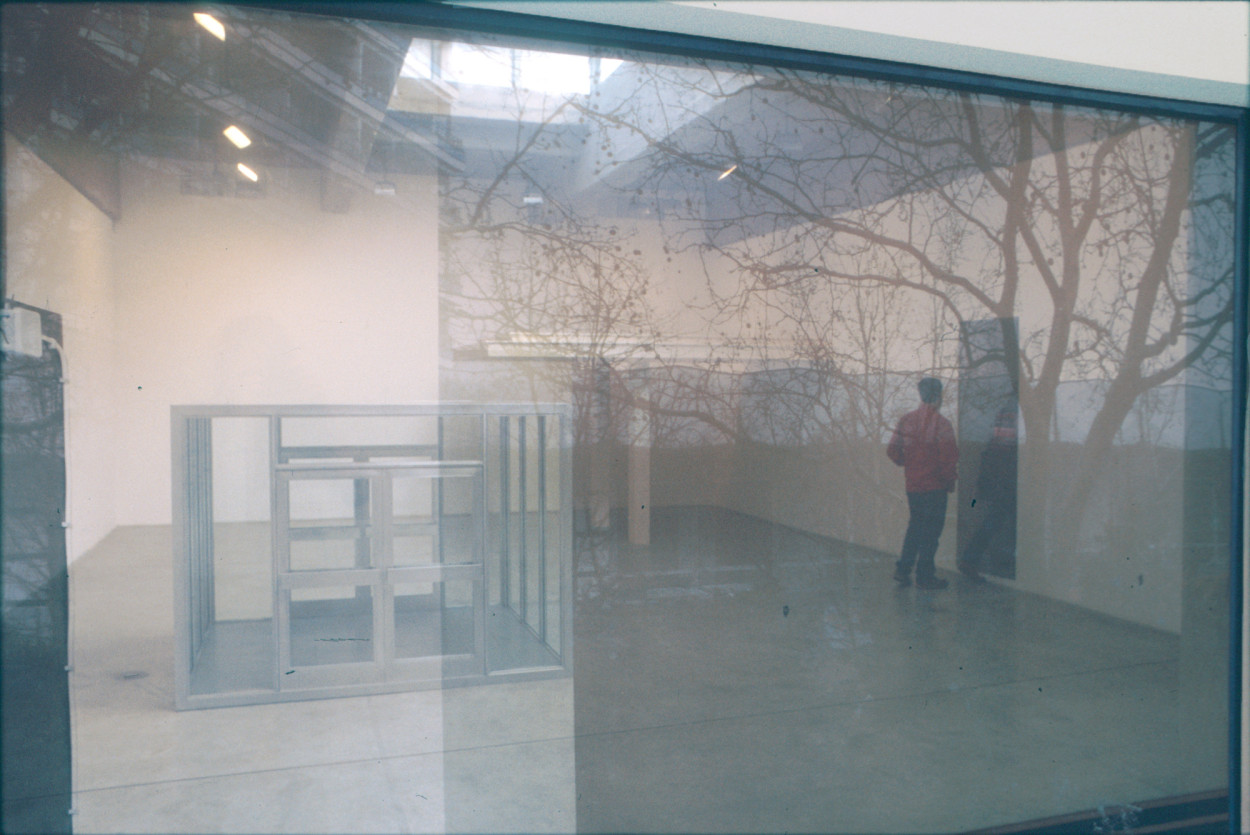SCHOOL, 2004
Tanya Bonakdar Gallery, New York
Solo Show
2004
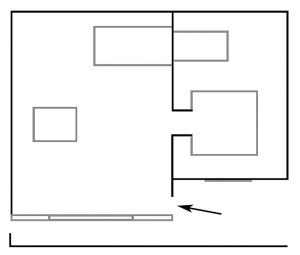
School
Exhibition: Tanya Bonakdar Gallery, New York, 2004
The group of sculptures Schule / School creates a sequence of architectural elements that fragmentarily recreate the entrance to a standardized former GDR–type school building. The SK Berlin building type used as a model here was built more than 150 times in East Berlin alone during the nineteen-sixties and seventies.
Two glass cubes and two projecting roofs were scaled proportionally to the size of the viewers. These greatly reduced versions cannot be entered, but the enlarged, room-sized versions allow viewers to walk into them.
The single form of the glazed cube entrance, together with the enlarged unlit canopy, take on the presence of a freestanding object in the space, especially since the cube cannot be entered in its reduced size, but can only be viewed from the outside.
Through an opening in the opposite wall, we enter a closed room that turns out to be an enlarged duplicate of the small cube. In this case we can only see the cube from the inside, as within it we suddenly find ourselves in the middle of a forest. The transparency (diapositive) of a forest photograph is set into the glass walls covering the entire surface area of the cube, projecting the image into the surrounding space, where further back we recognize the smaller duplicate of the protruding roof, this time with the lighting switched on.
With the repetition of the elements, the sociological structures and references associated with the interchangeable functional forms of postmodernity emerge. A tension arises for the viewers as they try to position themselves in the discrepancy between individual memory and collective experience.
